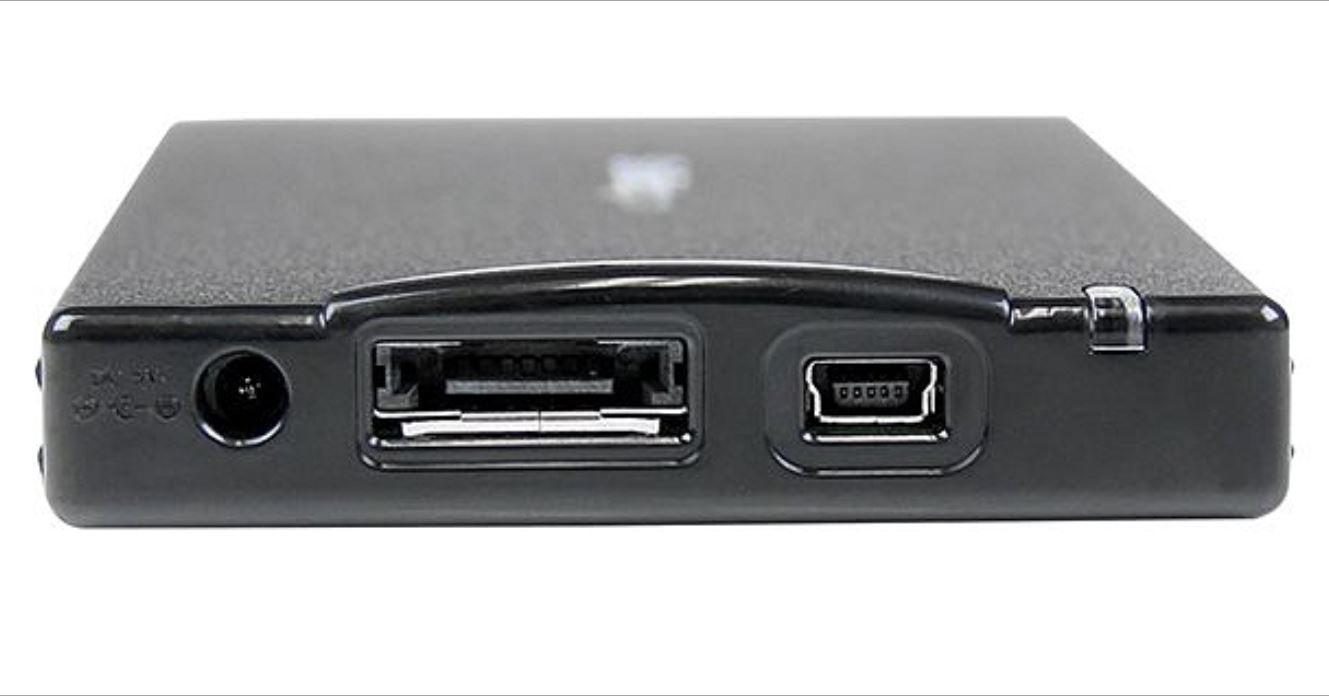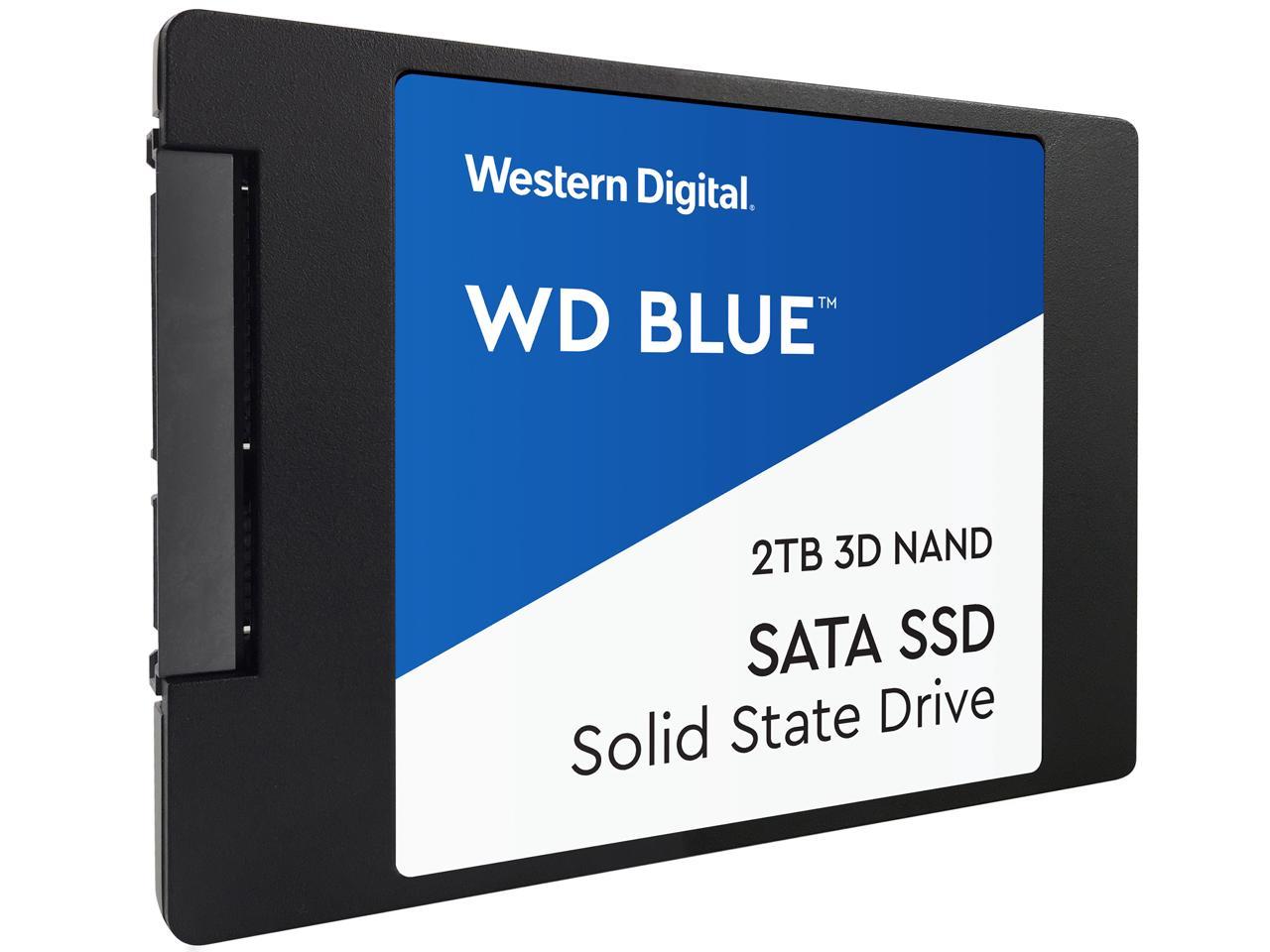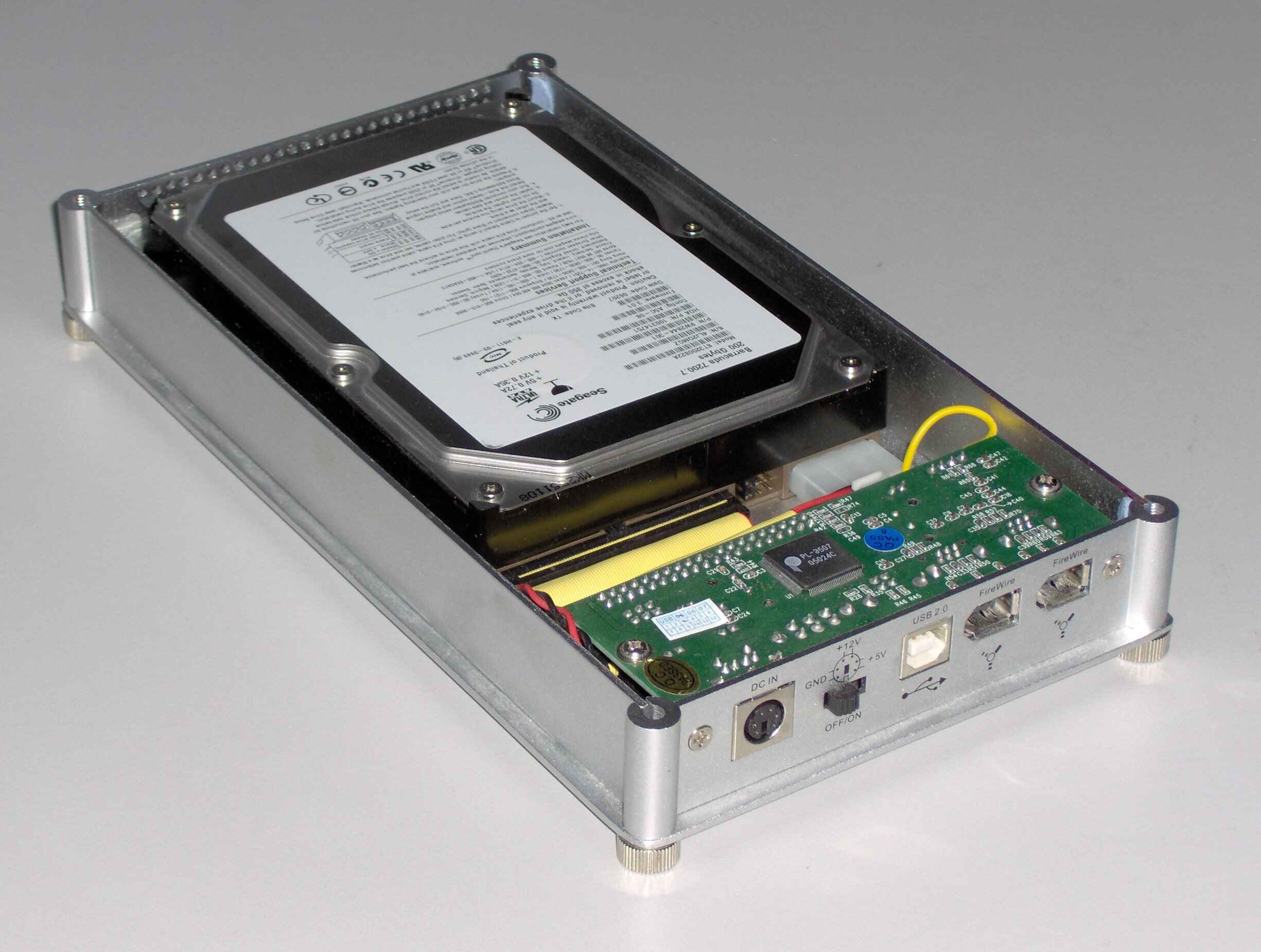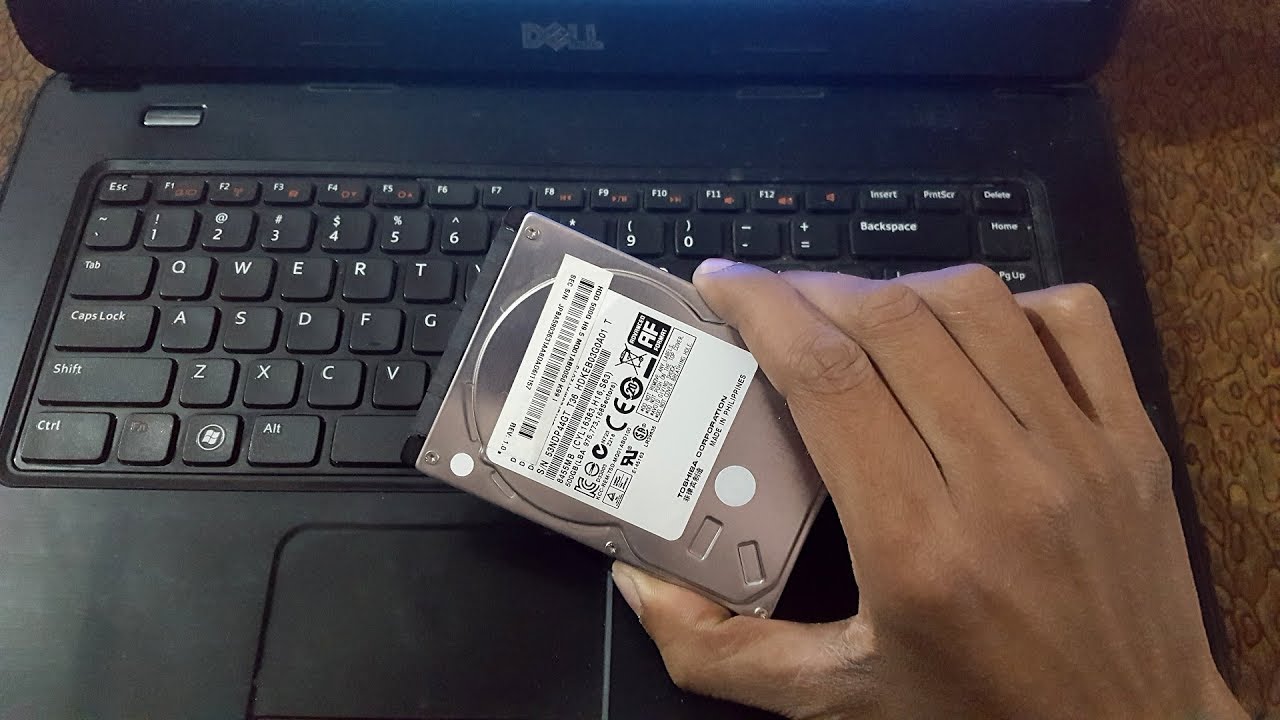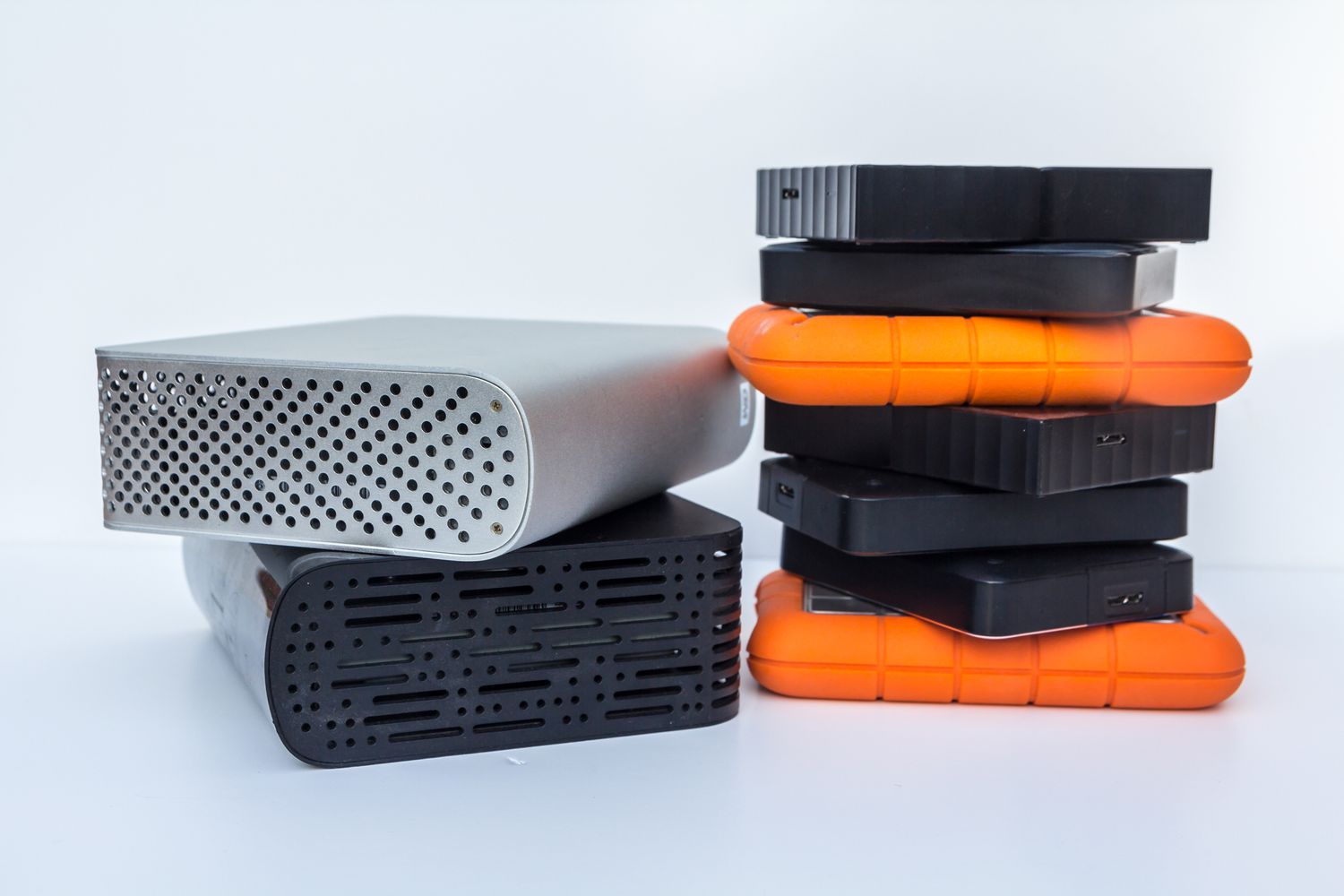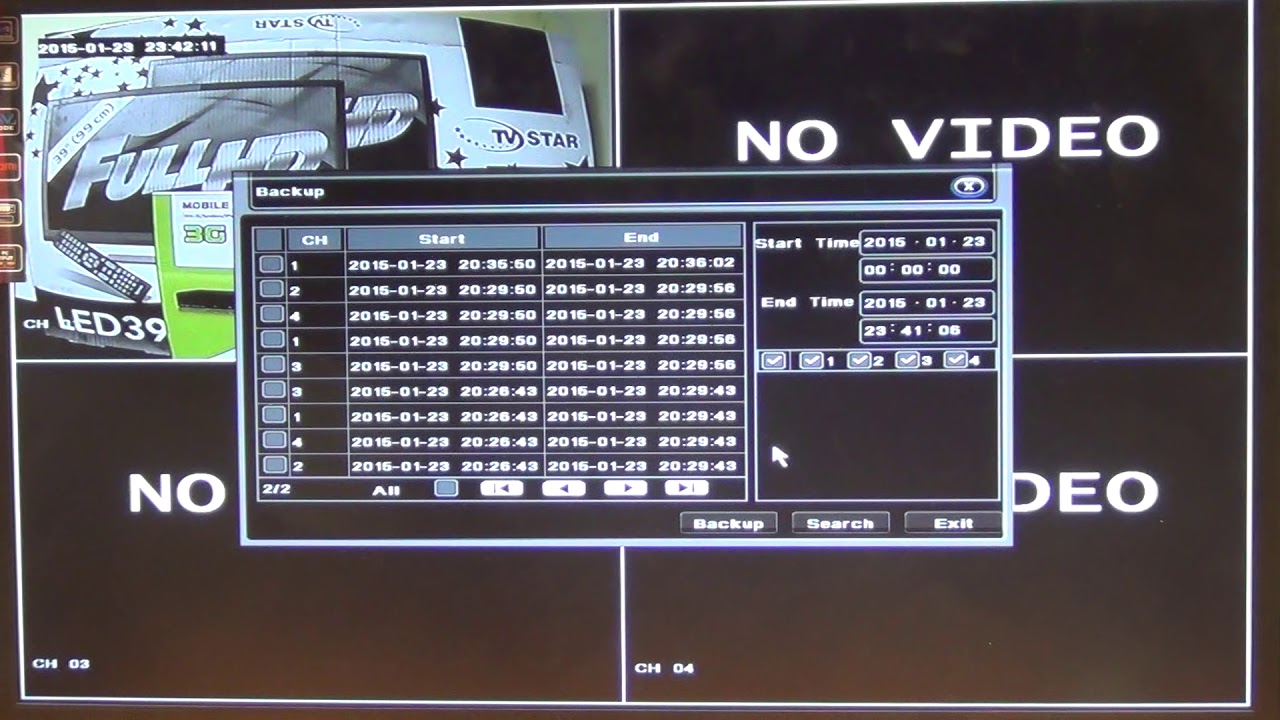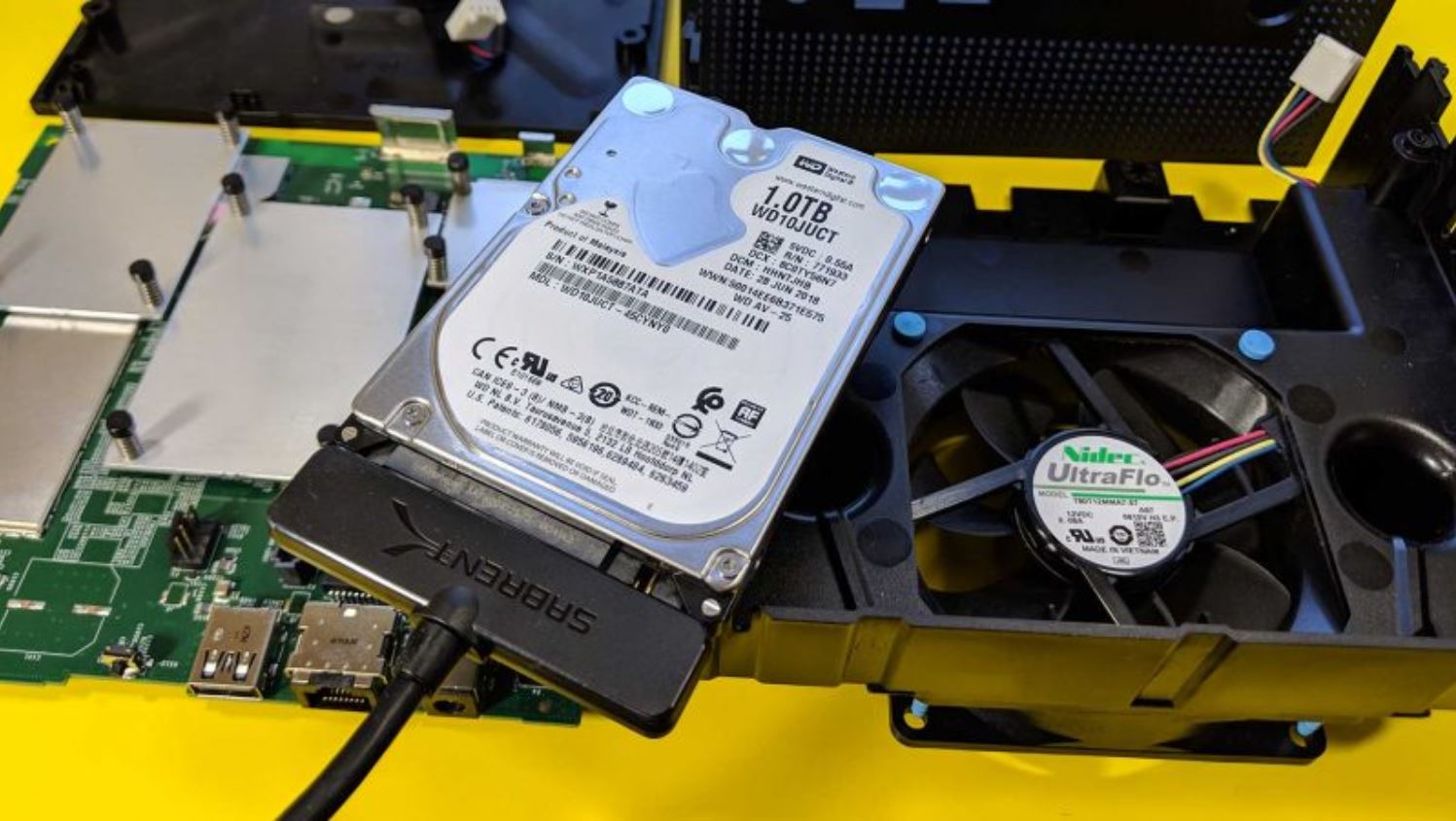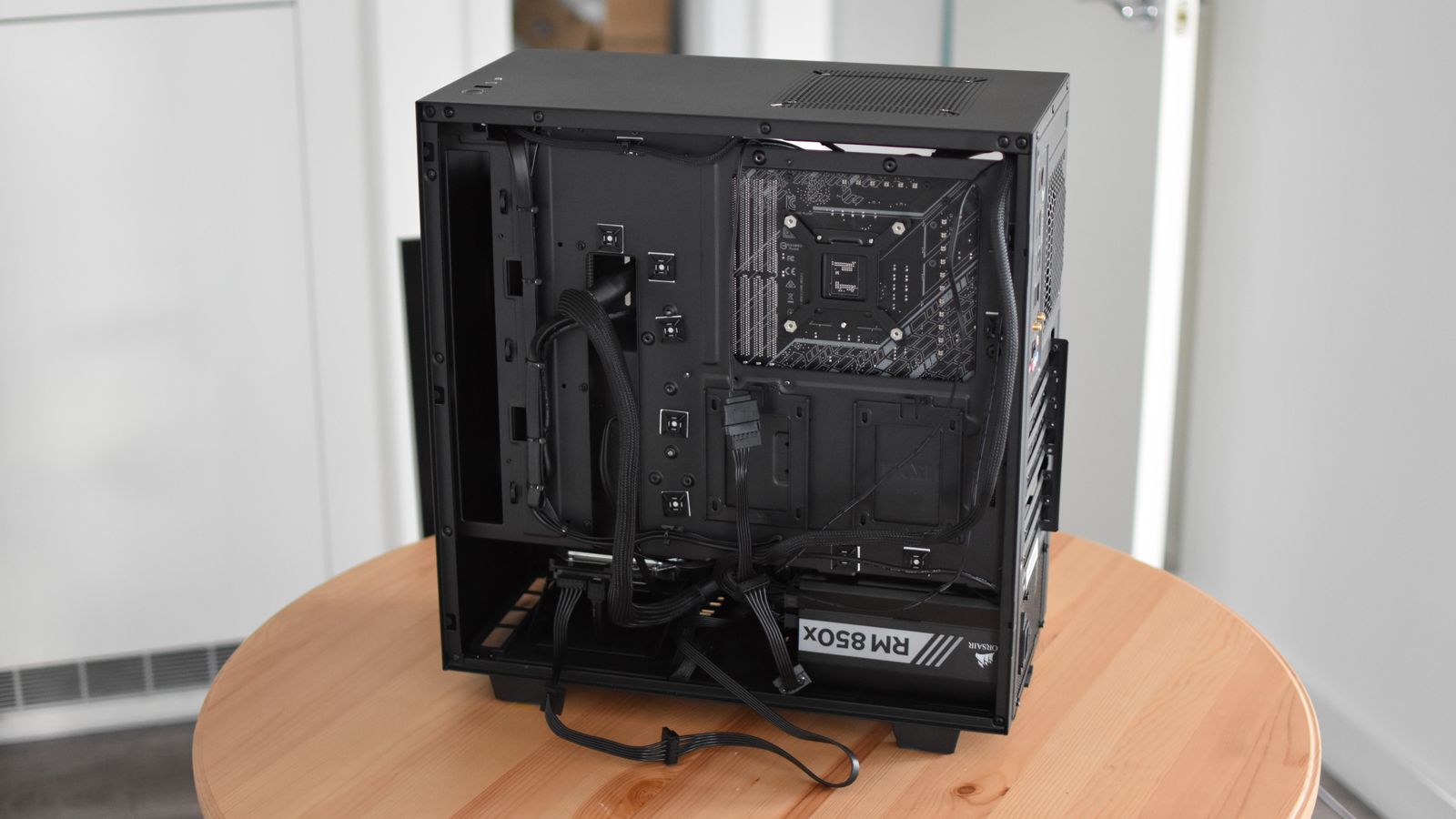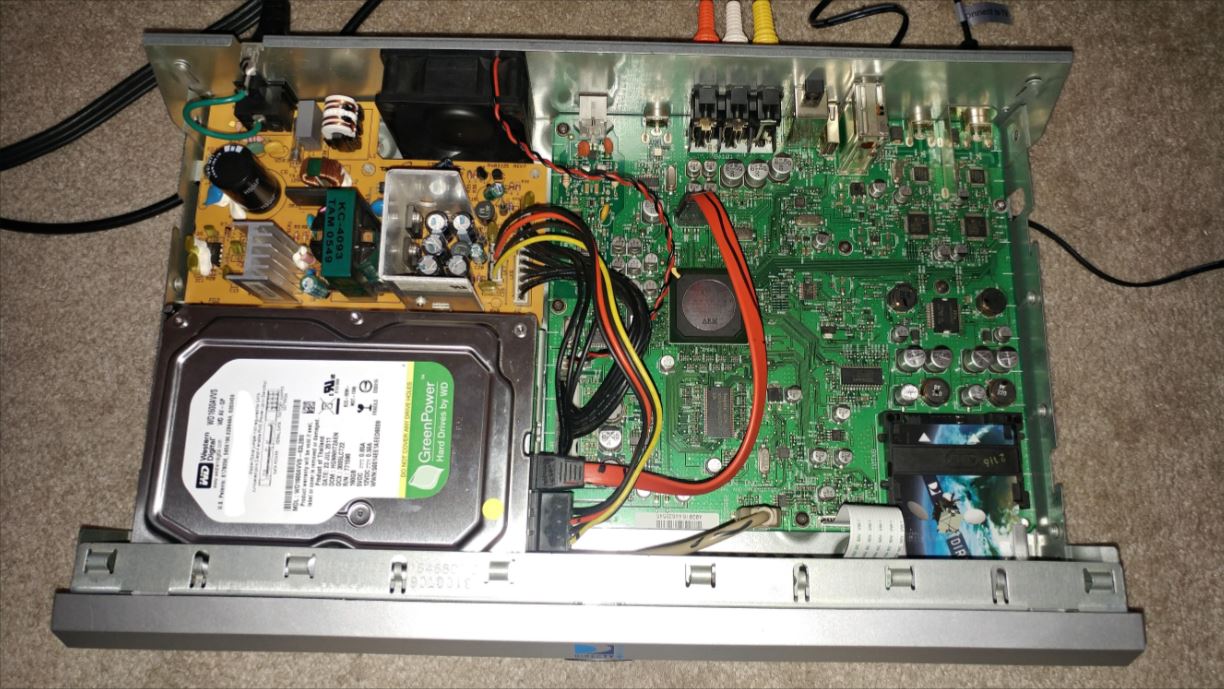Overview of eSATA External Hard Drive
The eSATA external hard drive has become a popular choice for individuals and businesses alike who need to expand their storage capacity. Offering high transfer speeds and reliable performance, eSATA drives have the ability to meet the demands of data-intensive tasks such as video editing, large file transfers, and backups.
eSATA, which stands for External Serial Advanced Technology Attachment, is an interface technology that allows for the connection of external storage devices, like hard drives, to a computer or other devices. Unlike USB or FireWire, eSATA is specifically designed for data storage and offers significantly faster transfer rates.
One of the key advantages of eSATA external hard drives is their impressive speed. With transfer rates of up to 6 gigabits per second, eSATA outperforms USB 2.0 and even USB 3.0 in terms of data transfer speed. This makes it ideal for tasks that involve handling large files or streaming high-definition media. Whether you are a professional video editor or a heavy gamer, eSATA ensures that your data is transferred quickly and efficiently.
Another advantage of eSATA external hard drives is their ability to provide reliable and stable connections. The eSATA interface provides a direct link between the external drive and the computer’s storage controller, eliminating the need for intermediate protocols or conversions. This direct connection results in minimal latency and reduces the chances of data loss or corruption.
In addition to its speed and reliability, eSATA is also known for its simplicity. Setting up an eSATA external hard drive is straightforward, requiring only a single cable to connect the drive to your computer. This simplicity extends to compatibility as well, as eSATA is widely supported by most modern operating systems, including Windows, macOS, and Linux.
However, it is important to note that eSATA does have its limitations. Unlike USB, eSATA does not provide power to the connected devices. This means that you will need additional power sources for the external hard drives, either through an AC adapter or a powered eSATA port. Additionally, eSATA is not hot-swappable, meaning you cannot connect or disconnect the drive while the computer is powered on.
Overall, eSATA external hard drives offer a reliable, high-speed solution for expanding your storage capacity. Whether you are a professional in need of extra storage for video editing or a casual user looking for faster backups and file transfers, eSATA provides the performance and stability required to meet your needs.
Advantages of Using eSATA External Hard Drive
The eSATA external hard drive offers several advantages over other storage options, making it a preferred choice for individuals and businesses alike. Let’s explore some of the key advantages of using an eSATA external hard drive:
- Fast Transfer Speeds: One of the standout advantages of eSATA is its impressive transfer speeds. With rates of up to 6 gigabits per second, eSATA outshines USB 2.0 and even USB 3.0 in terms of data transfer speed. This makes it ideal for tasks that involve handling large files, such as video editing projects or transferring hefty amounts of data.
- Reliability and Stability: The direct connection between the eSATA external hard drive and the computer’s storage controller results in minimal latency and a stable data transfer experience. Unlike USB or FireWire, eSATA is designed specifically for data storage, reducing the chances of data loss or corruption during transfers.
- Simplicity and Compatibility: Setting up an eSATA external hard drive is a straightforward process. It requires only a single cable to connect the drive to your computer, streamlining the setup. Additionally, eSATA enjoys wide support across different operating systems, ensuring compatibility for users on various platforms, including Windows, macOS, and Linux.
- Scalability: eSATA external hard drives offer significant storage capacity options, allowing for easy scalability based on your needs. Whether you require a few terabytes or multiple petabytes of storage, eSATA can accommodate your expanding storage requirements, making it an excellent choice for businesses and professionals in need of ample storage space.
- Security: eSATA offers the option to encrypt data, providing an added layer of security. Encryption ensures that your data remains protected against unauthorized access, making it an ideal choice for sensitive or confidential information.
- Minimal Latency: eSATA’s direct connection minimizes latency, resulting in faster and more efficient data transfers. This is crucial for tasks that demand real-time access to large datasets, such as video editing or high-performance gaming.
- Cost-Effective: Compared to other high-speed interfaces like Thunderbolt, eSATA is a cost-effective solution for achieving fast data transfer speeds. It offers comparable performance without the premium price tag, making it a budget-friendly option for individuals and businesses.
Overall, the eSATA external hard drive provides notable advantages that cater to both individual users and businesses in need of fast, reliable, and scalable storage solutions. Its impressive transfer speeds, reliability, ease of use, compatibility, and security make it a compelling choice for those seeking to expand their storage capabilities.
How Does eSATA External Hard Drive Work?
The eSATA external hard drive operates by utilizing the eSATA interface, which enables the connection of the drive to a computer or other devices for data transfer and storage. Understanding how it works can help you make the most of your eSATA external hard drive and optimize its performance.
The eSATA interface functions as a direct link between the external hard drive and the computer’s storage controller. This direct connection eliminates the need for intermediate protocols or conversions, resulting in faster and more efficient data transfer.
When you connect an eSATA external hard drive to your computer, it establishes a bi-directional connection between the drive and the eSATA port on your machine. The eSATA cable used for the connection consists of a set of shielded wires that transmit data signals between the drive and the computer.
Unlike USB or FireWire, eSATA does not provide power to the connected devices. Therefore, in addition to the eSATA cable, you will need an external power source for your eSATA external hard drive, such as an AC adapter or a powered eSATA port. This ensures that the drive has the necessary power supply to operate.
Once connected, the computer recognizes the eSATA external hard drive as a storage device. It treats the drive as if it were an internal hard drive, allowing you to access, read, write, and manage files on the external drive seamlessly.
eSATA external hard drives offer high transfer speeds, making them ideal for tasks that involve handling large files or data-intensive operations. The eSATA interface supports transfer rates of up to 6 gigabits per second, significantly faster than standard USB connections. This makes eSATA suitable for applications that require real-time access to large datasets, such as video editing, gaming, or working with high-resolution media.
It’s important to note that eSATA is not hot-swappable, meaning you cannot connect or disconnect the external hard drive while the computer is powered on. To ensure a successful connection, it’s recommended to connect the eSATA external hard drive before turning on your computer.
Overall, the eSATA external hard drive offers a direct, high-speed connection between the storage device and the computer. By leveraging the eSATA interface and the accompanying cable, you can take advantage of fast and reliable data transfer, making it a valuable tool for expanding your storage capacity and improving your workflow.
eSATA vs. USB: Which is Better for External Hard Drives?
When it comes to choosing an interface for your external hard drive, two popular options are eSATA and USB. Each offers its own set of advantages and considerations. Let’s compare eSATA and USB to determine which is better suited for external hard drives:
Transfer Speed: eSATA takes the lead in terms of transfer speed. With rates of up to 6 gigabits per second, eSATA outperforms USB 2.0 and USB 3.0. This makes it the ideal choice for tasks that involve handling large files, such as video editing or transferring hefty amounts of data quickly.
Power Delivery: USB has an advantage when it comes to power delivery. Unlike eSATA, USB provides power to the connected devices, eliminating the need for additional power sources. This makes USB more convenient for portable use or when you have limited access to power outlets.
Compatibility: USB enjoys widespread compatibility across various devices. It is supported by almost all computers, laptops, and consumer electronics. Whether you have a Windows, macOS, or Linux system, chances are you will have a USB port readily available. In contrast, eSATA requires an eSATA port, which is not as ubiquitous. Not all computers or laptops have built-in eSATA ports, so you may need to invest in an add-on card or an external eSATA adapter.
Hot-Swappability: USB is known for its hot-swappable nature, allowing you to connect or disconnect devices without powering off the computer. This flexibility is not available with eSATA, as it requires the drive to be connected before turning on the computer. It’s important to consider how frequently you need to connect and disconnect your external hard drive in your workflow when deciding between the two interfaces.
Use Cases: eSATA’s high transfer speeds and reliability make it the preferred choice for tasks that demand fast and consistent data transfers, such as video editing or working with large datasets. USB, on the other hand, is more versatile and suited for everyday tasks like file storage, backups, and general data transfer. It is also well-suited for portable use due to its power delivery capabilities.
Ultimately, the choice between eSATA and USB for external hard drives depends on your specific needs and use cases. If you require blazing fast transfer speeds and have access to an eSATA port, eSATA is the superior choice. However, if compatibility, power delivery, and hot-swappability are important considerations, USB is a more versatile option. It’s worth considering your workflow, available ports, and the nature of your data-intensive tasks to make an informed decision.
Choosing the Right eSATA External Hard Drive for Your Needs
When selecting an eSATA external hard drive, it’s important to consider your specific requirements and preferences to ensure you choose the right one for your needs. Here are some factors to consider when making your decision:
Storage Capacity: Determine how much storage space you require based on your data storage needs. Consider the volume of files you plan to store, whether it’s documents, photos, videos, or games. It’s a good idea to future-proof your storage capacity by opting for an eSATA external hard drive with ample room for expansion.
Transfer Speed: Pay attention to the transfer speeds offered by different eSATA external hard drives. While eSATA technology itself offers high speeds, some drives may have different performance capabilities. Choose a drive that best suits your data transfer requirements, especially if you work with large files or perform data-intensive tasks frequently.
Reliability: Look for an eSATA external hard drive from a reputable brand known for reliability. Research customer reviews and ratings to ensure that the drive has a good track record of durability and longevity. A reliable drive will safeguard your data and reduce the risk of data loss or drive failure.
Compatibility: Check the compatibility of the eSATA external hard drive with your operating system. Ensure that the drive is compatible with your specific operating system, whether it’s Windows, macOS, or Linux. Additionally, verify that your computer has an eSATA port or consider investing in an eSATA adapter if needed.
Budget: Set a budget for your eSATA external hard drive purchase. Consider the trade-offs between storage capacity, transfer speeds, and other features offered by different drives within your budget range. It’s important to strike the right balance between affordability and meeting your storage needs.
Additional Features: Some eSATA external hard drives may come with additional features, such as built-in hardware encryption, backup software, or RAID configurations. Evaluate whether these features align with your requirements and if they add value to your workflow or data protection needs.
Warranty and Customer Support: Look for drives that come with a solid warranty and reliable customer support. A warranty will provide peace of mind, ensuring that you can get assistance or replacement in case of any issues with the drive. Check the warranty duration and the level of support offered by the manufacturer.
By considering these factors and conducting thorough research, you can choose an eSATA external hard drive that best fits your storage needs, offers reliable performance, and aligns with your budget. Remember to prioritize the features that matter most to you, whether it’s storage capacity, transfer speeds, reliability, or additional features, to ensure you make the right choice for your specific requirements.
Setting Up and Installing an eSATA External Hard Drive
Setting up and installing an eSATA external hard drive is a straightforward process. Follow these steps to get your eSATA external hard drive up and running:
Step 1: Check Your Computer: Before proceeding, ensure that your computer or laptop has an available eSATA port. Some devices may have built-in eSATA ports, while others may require an eSATA expansion card or an eSATA adapter. If needed, install the necessary hardware to enable the eSATA connection.
Step 2: Power Off Your Computer: To avoid any potential issues, power off your computer or laptop before connecting the eSATA external hard drive.
Step 3: Connect the eSATA Cable: Connect one end of the eSATA cable to the eSATA port on your computer and the other end to the eSATA port on the external hard drive. Ensure a secure connection by aligning the connectors properly and gently pushing them in until they are firmly attached.
Step 4: Power Source: Confirm that your eSATA external hard drive has access to power. Depending on the model, you may need to connect an AC adapter or utilize a powered eSATA port to provide the necessary power supply for the drive.
Step 5: Power On Your Computer: After connecting the eSATA cable and ensuring a power source for the external hard drive, power on your computer or laptop. The computer will detect the newly connected eSATA external hard drive as a storage device.
Step 6: Initialize and Format the Drive: In some cases, the eSATA external hard drive may require initialization and formatting before you can start using it. Follow the prompts from your operating system to initialize and format the drive to your preferred file system (e.g., NTFS for Windows, APFS or HFS+ for macOS).
Step 7: Mount the Drive: Once the initialization and formatting process is complete, the eSATA external hard drive should be mounted and ready for use. You can access the drive through your operating system’s file explorer or Finder.
Step 8: Safely Eject the Drive: When you are done using the eSATA external hard drive, ensure that you safely eject it before disconnecting the cable. This prevents data corruption and ensures the integrity of your files. Use the appropriate option in your operating system to safely eject the drive.
Note: It’s always recommended to refer to the user manual provided with your specific eSATA external hard drive for any additional instructions or troubleshooting steps specific to your device.
With the above steps, you can easily set up and install your eSATA external hard drive, expanding your storage capacity and enjoying fast data transfers for your files, projects, and backups.
Tips for Using and Maintaining Your eSATA External Hard Drive
To make the most of your eSATA external hard drive and ensure its longevity, it’s important to follow some tips for proper usage and maintenance. Consider the following tips to enhance your experience with your eSATA external hard drive:
1. Handle with Care: Treat your eSATA external hard drive with care to avoid physical damage. Avoid dropping or mishandling the drive, as it contains sensitive internal components that can be easily damaged.
2. Keep it Cool: Prevent overheating by ensuring proper ventilation for your eSATA external hard drive. Avoid placing it in enclosed spaces or near heat sources. Consider using a cooling pad or keeping the drive on a stable surface to allow airflow around it.
3. Regular Backups: Back up your important files and data regularly to ensure their safety in case of accidental deletion or drive failure. Consider using backup software or setting up automated backup routines to make the process easier and more convenient.
4. Safely Eject: Always use the “Safely Eject” or “Eject” option provided by your operating system before disconnecting the eSATA external hard drive. This ensures that all pending write operations are completed and that the drive is safely unmounted, reducing the risk of data corruption.
5. Avoid Power Surges: Protect your eSATA external hard drive from power surges by using a surge protector or a UPS (Uninterruptible Power Supply). Power surges can damage the drive and lead to data loss. Be mindful of the power source and consider using a reliable power supply.
6. Regularly Update Firmware: Check for firmware updates for your eSATA external hard drive and ensure that you are running the latest version. Firmware updates often include improvements in performance, compatibility, and security.
7. Scan for Viruses and Malware: Periodically scan your eSATA external hard drive for viruses and malware to protect your files from potential threats. Use reliable antivirus software to ensure the security of your data.
8. Do Not Disconnect During Data Transfer: Avoid disconnecting the eSATA cable while data transfer is in progress. Abruptly disconnecting the drive during transfers can lead to data loss or corruption. Wait for the transfer to complete before safely ejecting the drive.
9. Keep Firmware & Drivers Updated: Ensure that your computer’s firmware and drivers related to eSATA functionality are up to date. This can help maintain compatibility and ensure optimal performance with your eSATA external hard drive.
10. Monitor Health and Performance: Utilize monitoring software provided by the manufacturer or third-party applications to keep an eye on the health and performance of your eSATA external hard drive. This can help you identify any potential issues early on and take necessary steps for maintenance or replacement if required.
By following these tips, you can optimize the usage and longevity of your eSATA external hard drive, keeping your files secure and enjoying reliable performance for years to come.
Frequently Asked Questions about eSATA External Hard Drives
Here are some commonly asked questions about eSATA external hard drives and their answers to provide you with a better understanding of this technology:
Q: What is eSATA?
A: eSATA stands for External Serial Advanced Technology Attachment. It is an interface technology specifically designed for connecting external storage devices, like hard drives, to computers and other devices. eSATA offers high data transfer speeds, making it suitable for data-intensive tasks.
Q: How does eSATA differ from USB?
A: eSATA and USB are two different types of interfaces with distinct characteristics. eSATA provides faster transfer speeds and is designed specifically for data storage purposes, making it ideal for tasks involving large file transfers or data-intensive operations. USB, on the other hand, offers power delivery to connected devices and is more versatile in terms of compatibility and hot-swapping capabilities.
Q: Are eSATA external hard drives compatible with all computers?
A: eSATA external hard drives require a computer or device with an eSATA port. While many modern computers and laptops have built-in eSATA ports, some may require an eSATA expansion card or an eSATA adapter for compatibility. It is essential to check the specifications of your specific computer or device to ensure compatibility.
Q: Can I connect multiple eSATA external hard drives to my computer?
A: Yes, you can connect multiple eSATA external hard drives to your computer by utilizing multiple eSATA ports or using an eSATA port multiplier or hub. This allows you to expand your storage capacity and manage multiple external drives simultaneously.
Q: Can I use an eSATA external hard drive on a Mac?
A: Yes, eSATA external hard drives are compatible with Mac computers. However, it is important to ensure that your Mac has an eSATA port or use an eSATA adapter to establish the connection. Additionally, you may need to format the drive in a compatible file system, such as APFS or HFS+, for optimal use with macOS.
Q: Are eSATA external hard drives hot-swappable?
A: No, eSATA external hard drives are not hot-swappable. To avoid any potential data loss or corruption, it is recommended to connect or disconnect the drive when the computer is powered off or in a suspended state. Always use the proper procedures, such as safely ejecting the drive, before disconnecting it.
Q: Can I use an eSATA external hard drive and USB external hard drive simultaneously?
A: Yes, you can use both an eSATA external hard drive and a USB external hard drive simultaneously on your computer. This allows you to take advantage of the different benefits and functionalities that each interface provides. Simply connect each drive to its respective interface port on your computer and manage your data accordingly.
Q: Can I use an eSATA external hard drive for gaming?
A: Yes, an eSATA external hard drive can be used for gaming. With its fast transfer speeds, eSATA is suitable for gaming purposes, such as storing and running games directly from the external drive. It can help improve load times and performance, particularly for games that require quick data access.
Q: Can I use eSATA with older computers?
A: Older computers may not have built-in eSATA ports. However, you can still utilize eSATA with these computers by installing an eSATA expansion card or using an eSATA adapter that connects to alternate ports, such as a PCI Express slot or ExpressCard slot. This allows you to take advantage of eSATA technology on older systems.
These frequently asked questions provide some insights into eSATA external hard drives and their compatibility, functionality, and usage. If you have further inquiries or specific concerns, it is recommended to consult the manufacturer’s documentation or seek additional support from the manufacturer or authorized retailers.
Is an eSATA External Hard Drive Right for You?
After exploring the features, advantages, and considerations of eSATA external hard drives, you may be wondering if it is the right choice for your storage needs. The decision ultimately depends on your specific requirements and preferences. Here are some key points to consider when determining if an eSATA external hard drive is right for you:
Speed and Performance: If you regularly work with large files, perform data-intensive tasks like video editing or need fast data transfers, then the high transfer speeds offered by eSATA make it an attractive option. eSATA’s superior performance can greatly improve your productivity and workflow efficiency.
Compatibility: Check whether your computer or laptop has an available eSATA port or if you can obtain an eSATA expansion card or adapter. Ensure that eSATA is compatible with your operating system, as most modern systems support the technology. Compatibility considerations are crucial to ensure seamless connectivity.
Power Delivery: Keep in mind that eSATA does not provide power to connected devices. You will need to have a power source available for your eSATA external hard drive, either through an AC adapter or a powered eSATA port. Consider your power needs and accessibility when making your decision.
Storage Capacity: Evaluate your storage requirements and choose an eSATA external hard drive that offers ample storage space for your files and future expansion. Consider the volume of data you work with and choose a drive that can accommodate your current needs and potential growth.
Use Cases: Evaluate the tasks you perform regularly and assess if the speed, reliability, and stability offered by eSATA are beneficial. If you engage in data-intensive activities such as video editing, working with large datasets, or gaming, an eSATA external hard drive can significantly enhance your experience.
Budget: Consider your budget when deciding on an eSATA external hard drive. While eSATA technology offers impressive performance, it is essential to balance your storage needs with your available funds. Compare different drive options and select one that fits your budget without compromising on quality or features.
By considering these factors, you can determine whether an eSATA external hard drive aligns with your specific needs. If high-speed data transfers, reliability, and stability are essential for your workflow, and you have the necessary compatibility and power requirements in place, an eSATA external hard drive can be a powerful asset for expanding your storage capabilities and improving your productivity.







